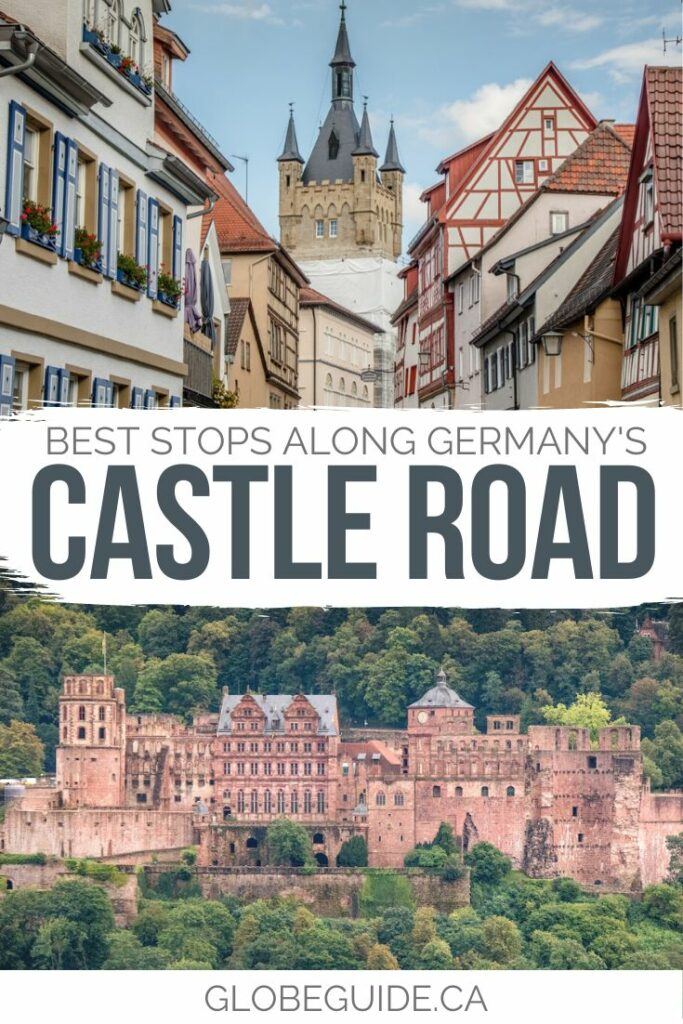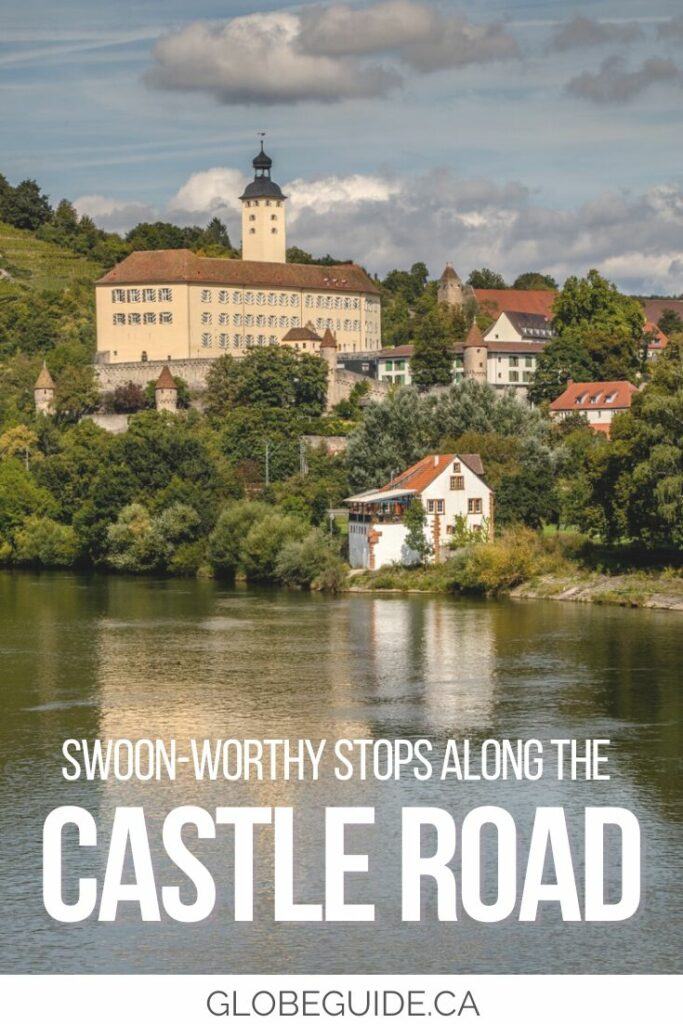Towering fortresses, tranquil rivers, thick forests, and picture-perfect cityscapes are among the highlights of a trip along the Castle Road in Germany.
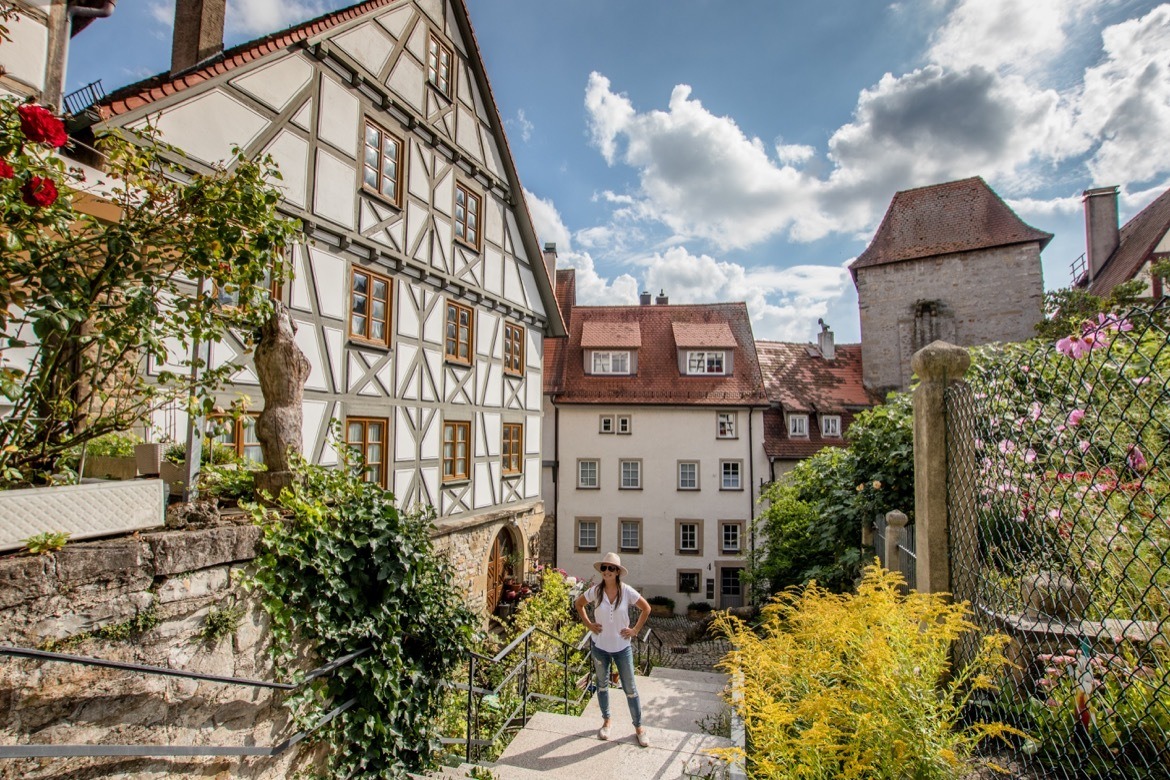

The scenic 780-kilometre route winds all the way to Switzerland and the Czech Republic, passing dozens of quaint towns, historic cities and centuries-old castles along the way.
It’s possible to travel by foot, car, cycling, in an RV and even onboard a river cruise as you explore the half-timbered houses, nature preserves and impressive gardens.
Here are some of the top stops along the beautiful Castle Road in Germany.Mannheim
While Mannheim is best known as an industrial centre and being the birthplace of inventions like the first motorcar and tractor, the easy-to-navigate city is also home to the Mannheim Baroque Palace.

Barockschloss Mannheim is one of the largest Baroque palaces in all of Europe, second only to Versailles. The palace was heavily damaged during WWII with only a few rooms escaping complete destruction, and the city painstakingly restored the intricate stucco, frescoes and wall panels over the next 60 years.
A huge courtyard surrounded by a 400 metre facade marks the entrance, where a sweeping ceremonial staircase leads up to the magnificent residence that was once used by the prince electors.


The palace’s Knights’ Hall glitters with dazzling chandeliers, vases and artifacts are on display in the former living quarters, and rich tapestries hang in the staterooms of the imperial apartment. Click here to book
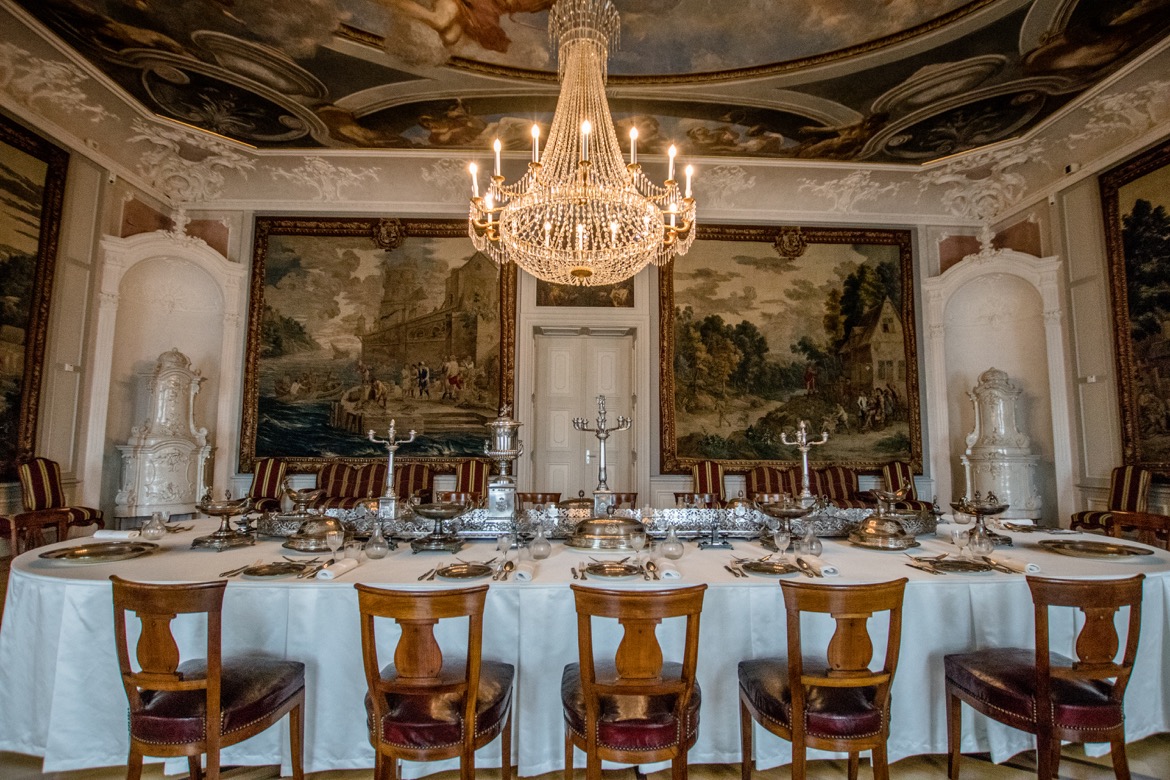
After visiting the Mannheim Baroque Palace, wander around the pretty city centre which has the Rhine and Neckar rivers winding through it. There’s a Jesuit Church, great shopping, a pretty park around the Water Tower and an Open Urban Art Museum where more than a dozen massive murals are painted on the side of buildings.

Schwetzingen
An 18th century Baroque palace is the highlight of a visit to this charming town that’s home to about 20-thousand people just 15 minutes from Mannheim, and worth a quick stop along the Castle Route.

The Schwetzingen Palace and gardens was built in the 14th century as a summer residence of the Prince Electors of the Palatinate, which helped put this spot on the map when Prince Elector Carl Theodor assumed the throne in 1743.
He was responsible for bringing artists and architects to the palace, who helped fashion it into the beautiful complex seen today–notably, the sprawling gardens.

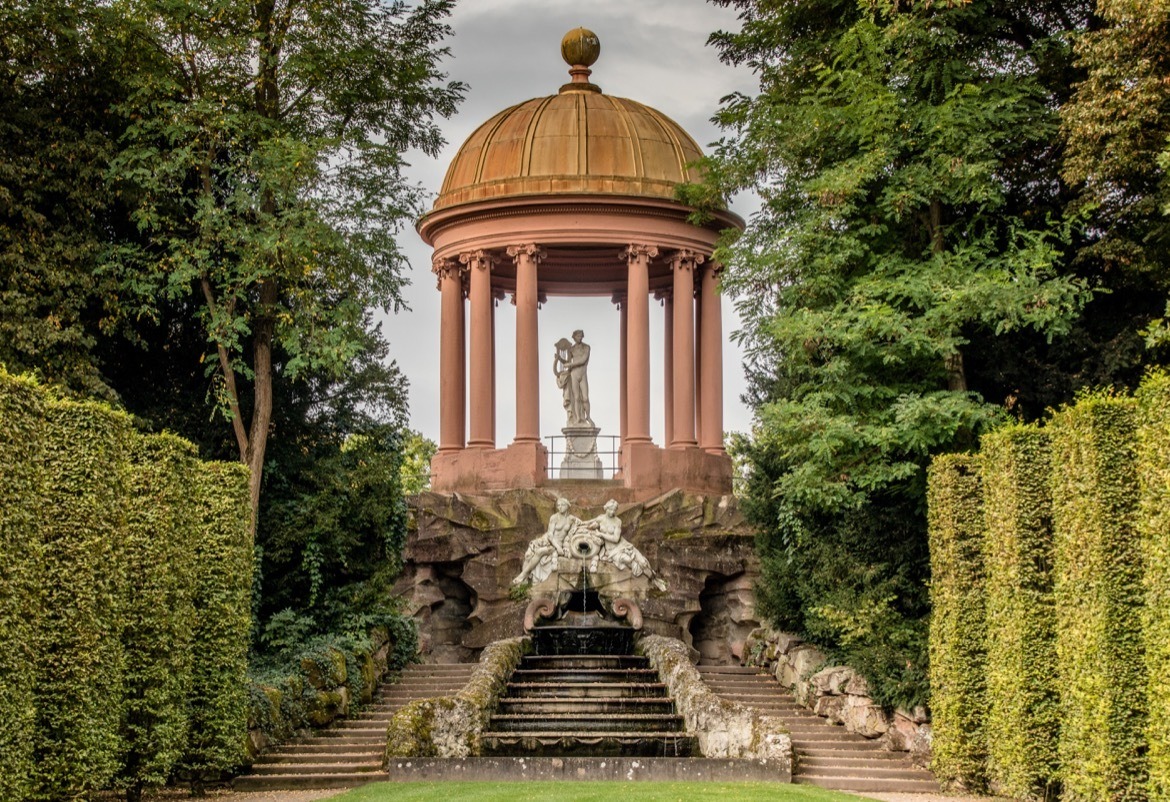
Manicured topiaries, pergolas and symmetrical landscaping are found throughout, accented with features like a bath house built like an Italian villa, temples inspired by Roman tombs, sculptures and an impressive pink mosque that is purely decorative and a popular spot now for wedding photos. Click here to book

Inside, the palace rooms have furnishings dating back to the 18th century and its Rococo Theatre is Europe’s surviving gallery theatre and still used to this day.
Local residents spend lots of time in the park, which frequently hosts events like exhibitions and music festivals.
Book a guided tour:

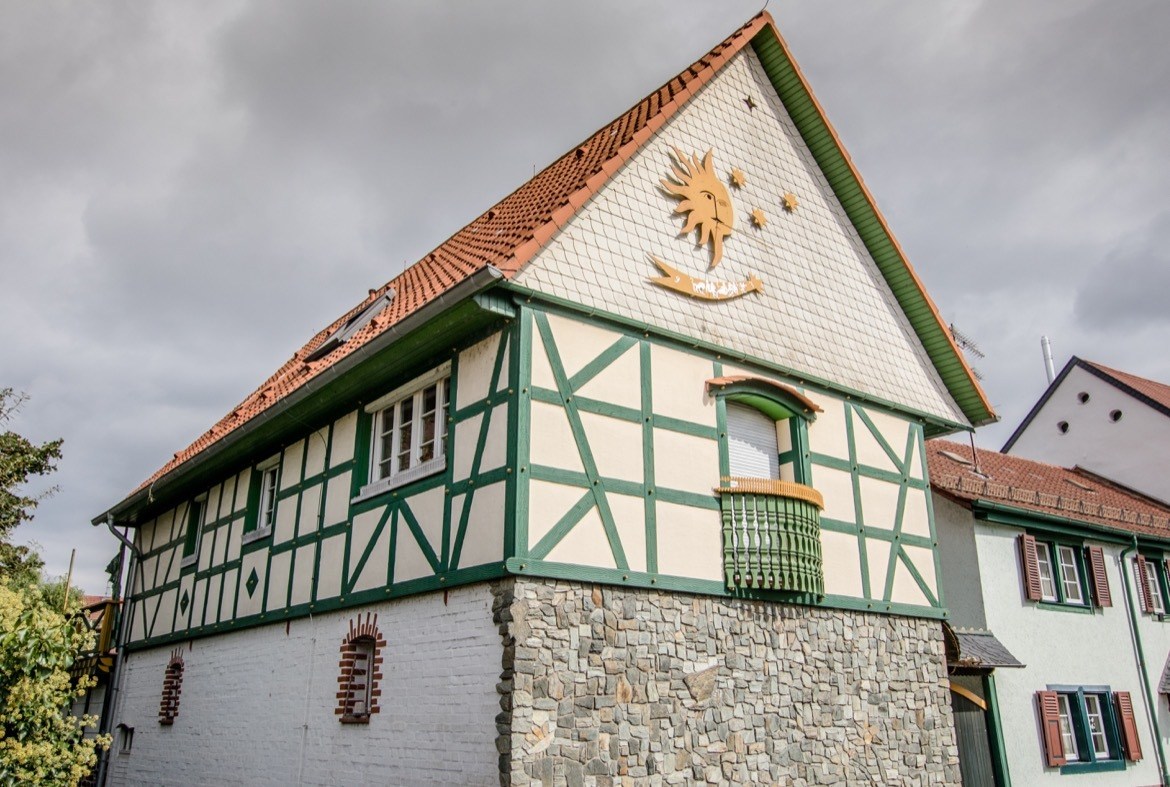
Heidelberg
One of the best stops along the Castle Road in Germany is romantic Heidelberg, a university city famous for its castle ruins nestled in the hillside overlooking the old town.

Heidelberg Castle is a Renaissance masterpiece dating back to at least the 1200s, which served as the residence of prince electors. However, it was continuously attacked throughout the 17th century, turning it into the red sandstone ruins seen today.

One way to get there is taking a funicular ride up Königstuhl hill, which stops at the castle before continuing all the way to the top. The 550-metre high vantage point has a birds-eye view of Heidelberg, the river and the Neckar Valley spread out below.

Other top things to do in Heidelberg include walking down the Hauptstraße shopping street which is one of Europe’s longest pedestrian zones, and crossing the bridge to the Philosopher’s Walk which winds along the other side of the bank.


 Stay at: Hotel Europäischer Hof Heidelberg
Stay at: Hotel Europäischer Hof Heidelberg
Hotel Europäischer Hof Heidelberg is an elegant, five-star property a short walk from the Altstadt, which dates back to 1865 and has been privately owned and run by four generations of the von Kretschmann family since 1906.
On-site amenities include a rooftop terrace, spa, indoor pool and sauna, as well as a fine dining restaurant. The large, light-filled rooms, apartments and suites are tastefully decorated, and some feature luxe linens, soaker tubs, separate sitting areas. Click here to book


Neckargemünd and Dilsberg Fortress
The towns of Neckargemünd, Neckarsteinach, Hirschhorn and Eberbach make up the so-called ‘Romantic Four’ in the Neckar Valley.
Half-timbered houses, fortresses and a Geo-Naturepark are just some of the attractions, and it’s also one of the best areas along the German castle tour route for cycling.

Neckargemünd is on the banks of the Neckar where the river Elsenz flows into it, and surrounded by the foothills of the Odenwald. Its medieval old town dates back more than 1000 years, with landmarks like a gate from 1788 emblazoned with the town’s coat of arms, and the ruins of Reichenstein Castle which was built in the 12th century.

Most visitors come here to see the nearby Dilsberg Fortress Ruins. Built in 1150, it has a 46-metre-deep well in the courtyard and an 80-metre-long subterranean passageway which is used as a habitat for endangered bats during winter.

The highlight of a visit is heading up the hexagonal tower to enjoy spectacular panoramic views of the Neckar valley and Odenwald Forest below.

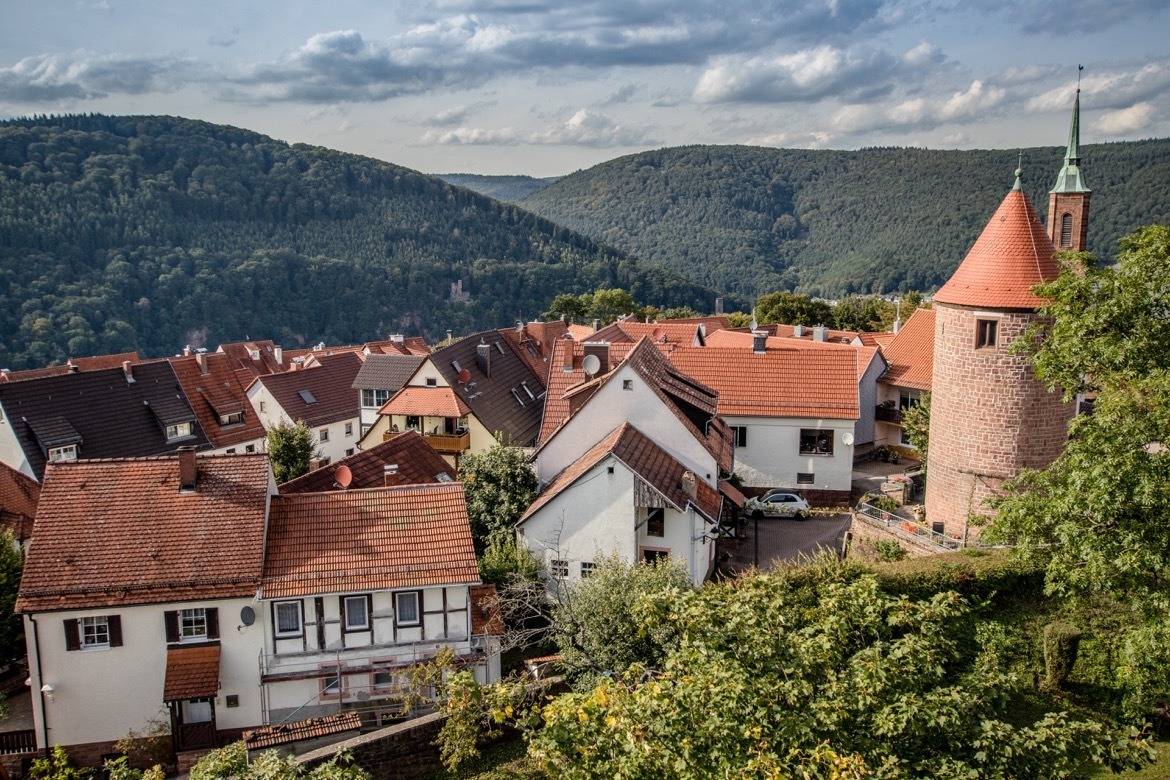
Stay at: ART-Hotel Neckar
The funky ART-Hotel Neckar (there’s a giant giraffe out front!) has a great location in the heart of Neckargemund, with large rooms overlooking the picturesque street. Click here to book

Neckarsteinach
Neckarsteinach is a must-see along Germany’s castle drive thanks to its unique claim to fame: from a single spot along the waterfront, it’s possible to see not one, not two, but four different castles at the same time.

The medieval townsite is also a stunner, with a long car-free promenade, pretty plazas and half-timbered houses. Neckarsteinach serves as the southern entrance to the European Geo-Nature Park Bergstraße-Odenwald and easily connects to towns like Hirschhorn and Eberbach via well-marked cycling trails.



Hirschhorn
Hirschhorn is nicknamed the ‘Pearl of the Neckar Valley’ and has a stunning streetscape thanks to the reflections of the medieval town in the water below.

Its crown jewel is the imposing 12th century castle which is now a hotel with a beautiful outdoor terrace and fantastic views of the valley from its tower. The townsite has narrow passageways, historic homes and a monastery, and there are boat excursions offered along the river.

Eberbach
Eberbach is one of the larger towns in the region with a good selection of restaurants, cafes, hotels and campsites, which makes it a great base for exploring the best castles in Germany.

The terracotta-toned town was founded in the 13th century along the banks of the river, and its fortified walls have four corner towers open to the public which have great views of the forest, river and half-timbered houses.
Other highlights include Old Market Square (Alter Markt) with a gorgeous painted facade on the side of Hotel Karpfen depicting the town’s history, and the Badhaus which is one of the region’s best-preserved medieval bath houses.

Globe Guide tip: Enjoy a sweet treat at Eis Cafe Venezia in the city centre. It’s easy to find—just look for the long queue of people waiting to devour their famous spaghetti gelato!

Stay at: Hotel Karpfen
Hotel Karpfen is one in one of Eberbach’s most historic and photographed buildings, and its convenient location in the centre means it’s easy walking distance to all the sites and restaurants. Free parking is available, as well as secure bike storage. Click here to book

Gundelsheim and Horneck Castle
Ever slept in a castle? You can do just that in Neckarzimmern, home to Horneck Castle which dates back to the 1400s.

The steep terraces of a cultivated vineyard wind down the hillside, and the Schloss Horneck castle hotel has two dozen rooms, a restaurant, terrace and a forest chapel. Click here to book

Those who head down the hill for a walk around the quiet town will soon discover Gundelsheim, where the sunshine-yellow Horneck Castle of the Teutonic Order of Knights is a worthy landmark in this wine and hiking paradise.
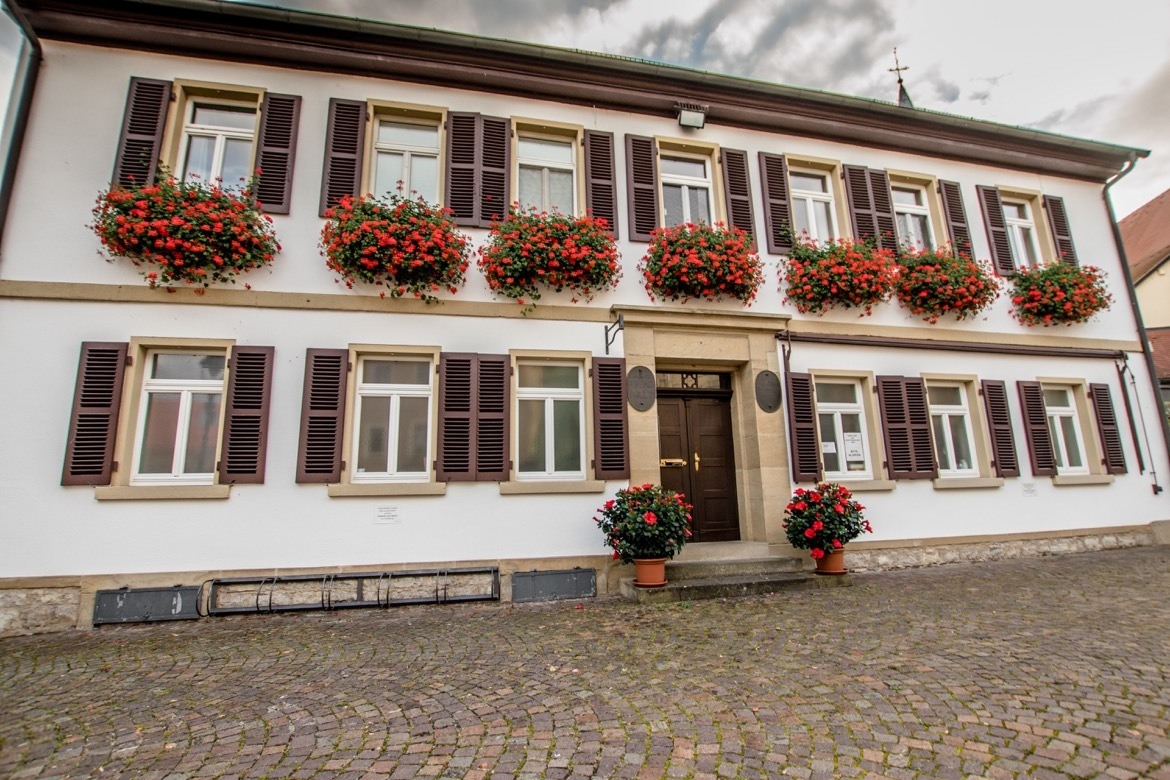

Guttenberg Castle
Guttenberg Castle is just down the road (it takes less than 30 minutes to walk between here and Gundelsheim), and this one has a fascinating story: it’s still inhabited by the family who’s owned it since the 1400s.

The castle was purchased centuries ago by ancestors of Mr. Bernolph von Gemmingen, Lord of the Castle, and today there’s a chance you’ll see him, his wife or grown children around the grounds.
As one can imagine it’s not exactly cheap to live in a castle, so to ensure it stays preserved the von Gemmingens opened up their home to the public.

Functions like weddings and corporate events are often hosted here, there’s a museum detailing Guttenberg’s history with exhibitions about knighthood, castle life and medieval torture, and an observation platform with spectacular views.
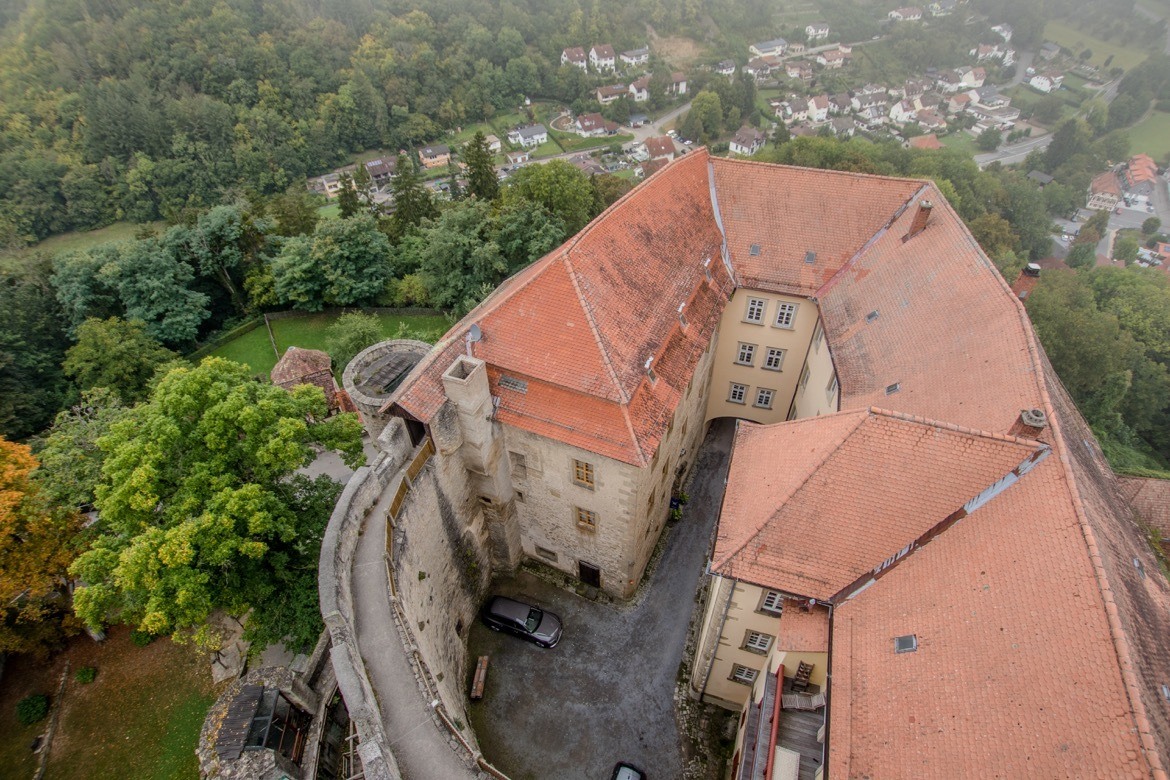

Time a visit for the twice-daily falconry show to see magnificent birds of prey in action; the castle became Europe’s first private sanctuary for eagles when birds were first brought here in the 1970s.


Bad Wimpfen
One of the most enchanting cities along the Castle Road in Germany is Bad Wimpfen, a medieval masterpiece that sits high over the Neckar.


98 per cent of the houses in the old town are beautifully-preserved half-timbered homes, anchored by a fortified imperial palace known for its soaring Blue Tower.



Cozy cafes line the narrow, twisting streets of this spa town, which is especially popular during the holiday season thanks to its fantastic Christmas market. There are also all sorts of tours with themes like religion or medicine where costumed guides share an entertaining perspective of Bad Wimpfen’s notable landmarks.

Rothenburg ob der Tauber
Nestled in the lush, green Tauber Valley, Rothenburg ob der Tauber is one of the most charming towns in all of Germany thanks to its centuries-old fortifications, impressive vistas and storybook-like town centre.

Some of its buildings have stood since the 1100s thanks to the high walls that have protected the town through many wars, and the cobblestone laneways are lined with restaurants, shops and homes draped with vines and accented by window boxes bursting with blooms.

Rothenburg ob der Tauber is known for its timber-framed houses, the most famous of which is found near the Sieber-Tower, which also serves as an entrance into the old town. ‘Plönlein’ means plain, but the crooked house is anything but thanks to its golden-yellow, picturesque facade.

While Rothenburg ob der Tauber is popular with day-trippers along the Romantic Road, those who stay the night here can take part in the memorable Night Watchman’s tour which begins at 8 PM. As bells clang to mark the passing of another hour, the night watchman appears under the faint light of a lantern, immediately captivating the crowd as he leads the way through Rothenburg’s deserted streets and explains the town’s past through tales full of fascinating anecdotes, wit and dry humour.
The tour costs 9€ per adult starting from the market square from April to December, and can be paid directly to the night watchman afterwards.
Book a tour to Rothenburg ob der Tauber:

Nuremberg
One of the last stops along the German castles tour is Nuremberg, which is famous for having one of the best European Christmas markets which takes over the historic centre every holiday season.
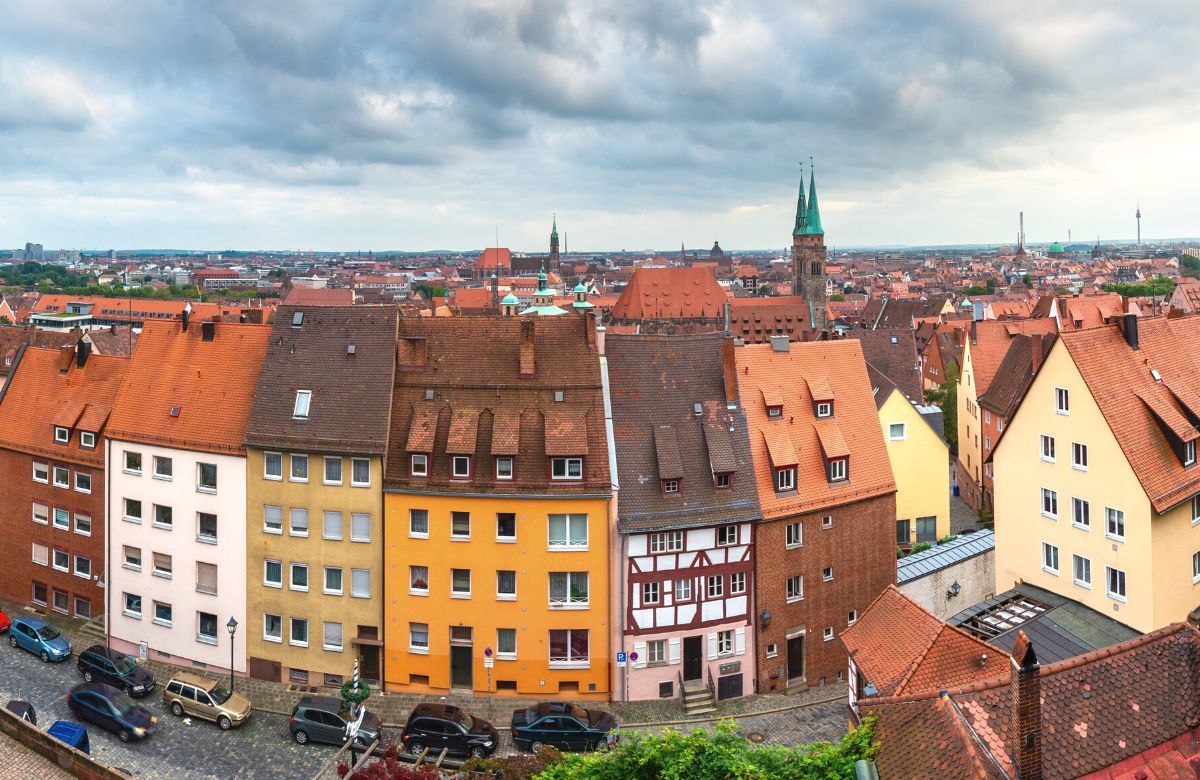
Here, you’ll find the Imperial Castle of Nuremberg perched high on a hill, and fortified by the 13th century walls and defensive towers that surround the Old Town.
The medieval castle is framed by a moat, and visitors can wander along the fortress’ winding stone pathways which link spots like the well house and museum. There are also wonderful city views, where throngs of tourists jockey for position along the walls to catch a mesmerizing glimpse of Nuremberg spread out below.
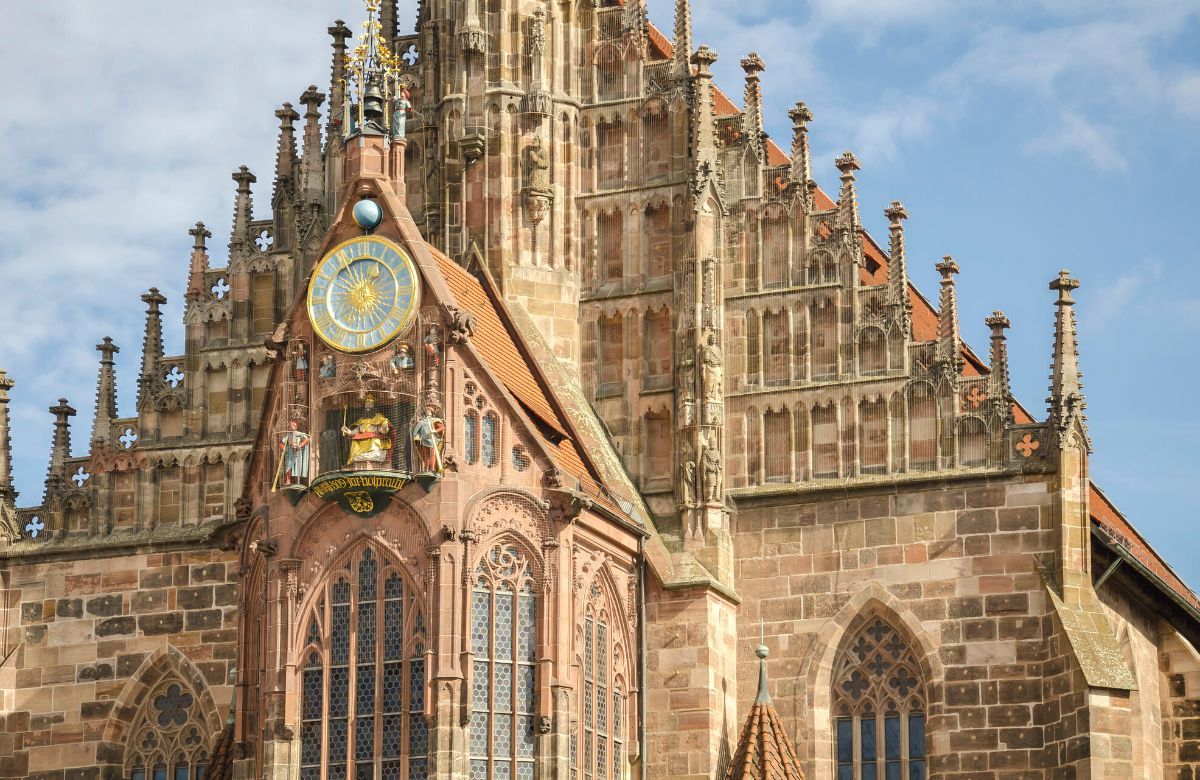

Afterward, head down to Weißgerbergasse (Tanners’ Lane) where there are historic, half-timbered homes.
Book a guided tour of Nuremberg:
How to tour the Castle Route in Germany
One of the best things about this route is there are so many ways to get to the castles in Germany, whether it’s by bus, train, river boats, RV, guided excursions or self-drive tours.

Some of them are so close together it’s possible to walk or hike, and another unique option is renting an ebike and cycling between the castles. Here are some suggested biking routes, ranging from a quick afternoon excursion to multi-day trips along the Castle Road in Germany.

FAQ for driving the Castle Road
Best time to visit the Castle Road
Germany is enchanting all year round, with the scenery and road conditions at their best in spring, summer and fall. However, those who want to enjoy the famous Christmas markets and get into the holiday spirit will need to time their trip for mid-November to January.
Helpful tips for visiting the castles
Most castles host special events throughout the year, so check their websites ahead of time and plan accordingly. There are also so many along this route that it’s truly impossible to do any of them justice in just a few days, so pick just a handful to visit in person (such as the Heidelberg, Nuremberg and Guttenberg castles) and admire the rest from afar.
How to get to the Castle Road in Germany
The closest airport is in Nuremberg; however, there are better international connections from Frankfurt and Munich.
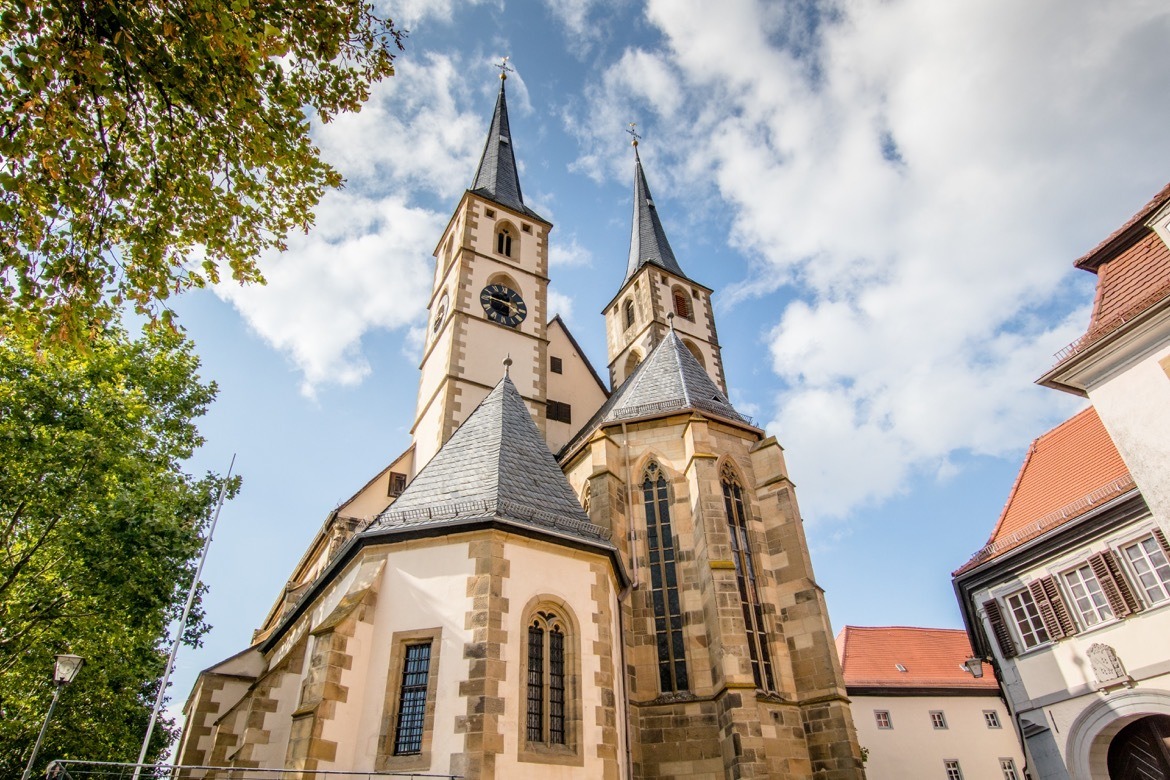
Globe Guide explored the Castle Road in Germany as a guest of Tourismus Marketing GmbH Baden-Württemberg. As always, hosts have no editorial influence on articles.
YOU MIGHT ALSO ENJOY:
- 13 magnificent Bavarian castles near Munich, Germany
- 5 fairytale castles in the Loire Valley, France
- Best things to do in Strasbourg, France
- Royal retreat: Amazing Irish castle hotels near Dublin
SHARE THE PINSPIRATION! CLICK THE IMAGES BELOW TO PIN:
This post may contain affiliate links, which Globe Guide receives compensation for at no additional cost to you.




